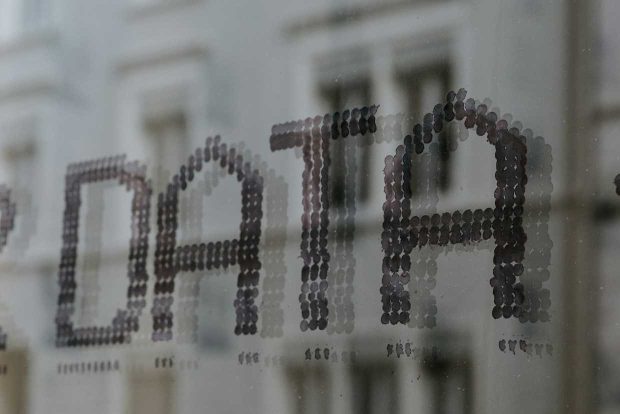Why good decisions follow good data

Claudio Schwarz on Unsplash
Sharing the insights from a recent Global Government Forum webinar looking at how to use data in policymaking to boost collaborative problem-solving in government.
Governments are very good at collecting data, but often struggle to know what to do with it. This is especially true once pressure mounts to use what data they have to improve public service delivery.
As part of Global Government Forum’s Public Service Data Live conference, we invited three speakers to discuss ways in which the UK government already uses data to develop better targeted and personalised services, and how this can be improved. How, for example, can data be used to evaluate the government’s delivery and improve services? How can data across its departments be joined up better? Answers to such questions are vital, not least in the context of the UK cabinet secretary Simon Case’s ambition to get analysts from across government collaborating on shared problems.
Dr Sarah Deeny, deputy director of national hazard assessment and analysis, All Hazards Intelligence, Data, Analytics and Surveillance Group at the UK Health Security Agency (UKHSA), said that while decision-makers behind the UK’s healthcare infrastructure need to know what’s going on, their ability to start strong and “course correct if needed” hinges on “situational awareness” and therefore good data streams.
“Responsiveness is something that we’re seeing growing demand for, and as our forecasting capabilities and data science capabilities grow, it’s something that we are learning to respond to,” she said.
Deeny added that since the pandemic, there has been a real need from senior leaders in healthcare to accurately forecast hospital admissions for a variety of diseases. She said that various winter bugs that went away to a certain extent during the pandemic such as flu and RSV have since come back “with a vengeance”.
“That has added complexity to decision making, because now there are multiple threats to the system, although thankfully, obviously not on the same scale as during the height of the pandemic,” she said.
“Of course, the Covid-19 pandemic really amped up the demand and need for those kinds of services in health.”
How can AI assist?
The discussion highlighted the potential for data experts to pull together and analyse huge amounts of structured and unstructured data from a range of different sources, using technologies like AI to spot patterns and trends invisible to the naked eye.
Caroline Payne, data and analytics director of public sector in Northern Europe at SAS, offered an example that she said has arisen from her efforts to help clients access data.
She described the emerging potential of generative AI to find patterns in data within existing datasets, and turn this data into synthetic replicas that can be interpreted more easily.
“That’s a use case that we’re starting to see more and more interest in,” she said.
Emma Hyland, head of data and military intelligence (MI), Data and Analysis Team, Illegal Migration Operations Command at the UK Home Office, agreed that AI had promising potential to aid decision-makers. However, she reminded the audience that good data remains the only real basis for good decision-making.
“It sounds really obvious to say this, but MI outputs, visualisations, dashboards, the opportunity of AI, all of that stuff… it’s only as good as the data feeding in.”
She added that data quality is of fundamental importance, because of how that data is going to be used downstream.
“It needs a whole system approach, bottom up, top down, coalescing and investment buy in at all levels,” she said.
Hyland called data “a golden thread running throughout everything that we do” – a phrase that resonated with the panel.
Informing throughout delivery
Speakers touched on the fact that data can be used to help inform decisions across the policy and delivery lifecycle. For instance, Deeny noted that when winter hits in the UK, data becomes crucial to managing the influx of patients entering hospital doors.
“On a basic level they need to have our data and have forecasts that will tell them how many patients are likely to come to a given hospital in a given region,” she said.
She added that it was important for care-giving organisations to ask whether this falls within their planning parameters, as well as when a trend is likely to deescalate, so that they know when to resume normal care.
Deeny went on to say that no matter how far ahead an organisation makes its forecasts, no matter how good its data science methods are, uncertainty will always remain a factor. Chasing certainty should therefore never outweigh user need.
“It was really important for us to work with the stakeholders and users to understand the tension between having more certainty closer to home or closer in time, versus more uncertainty further ahead,” she said.
Leaning on unsung heroes
In order to target data collection and analysis effectively, data experts must work closely with policy officials. Only by understanding what questions are being asked can they know what data to look for and analyse.
Hyland drove this point home when she urged officials to lean on these “unsung heroes”, who she said can help them “cut through what appear to be bureaucratic blockers” in their department.
“My advice to anybody who feels that they are struggling in this space is to unlock the knowledge and expertise of the data protection experts within their organisation,” she said.
She added that doing so would in turn give officials assurance that they have fulfilled “due diligence on all of the legal provisions” around the use of data. This due diligence, particularly in matters of privacy, is of course vital. However, it can often be hard for officials to know when they’ve done enough.
Hyland recommended having an “open conversation with your data protection practitioner and the office of the data protection office”, because privacy notices are often carefully constructed for very good reason to be legally compliant. She said there is also “a logistical operational consideration when those are written”.
“I think relying on those who understand exactly what the privacy notices are permitting and not permitting within legislative frameworks unlocks a lot of what people see as challenges and blockers around them,” she commented.
Perfect data is the enemy of good data
Deeny concluded that obstacles should not excuse inaction on the part of officials in government.
“Sometimes, as data professionals, we can be a bit hung up on the data that would theoretically be available if everything was perfect and we had access to everything,” she said.
“As analysts, we should be able to still do something useful with what we have, even if it isn’t everything, and that maybe will provide the motivation and the use case to go back and do it properly.”
Replay: The ‘Unlocking insight from data to support decision making’ webinar took place on 9 May 2024. You can watch the webinar in full here.



